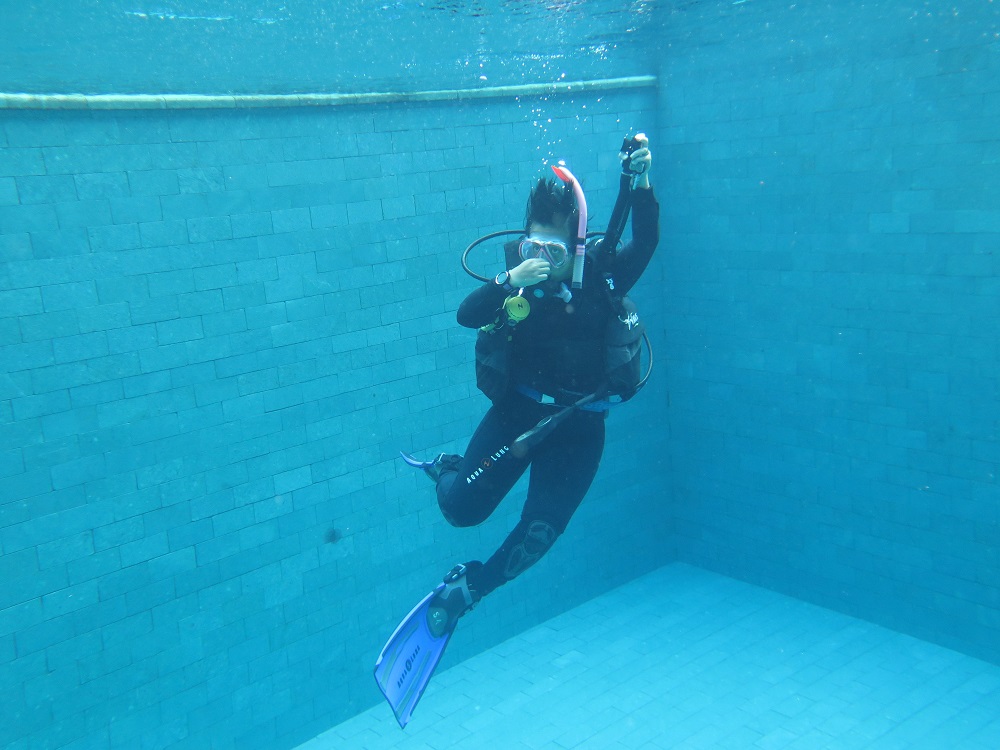Having problems with your ear is a common thing among divers. Fortunately, most ear problems can be prevented if you equalize the right way.
First – some physiology
The middle ear is a dead air space which is connected to your nose and throat through the Eustachian tube. During a dive you have to match the pressure on the middle ear to the pressure around you. If you fail to do so, the result is pain and potential damage to the ear. It means that you have to open the Eustachian tubes to equalize the pressure on your middle ear.

How to equalize right
- Equalize at the surface – but only if it helps you and if so, do it gently.
- Descend with your feet first and also look up. It helps to open up the Eustachian tubes and also takes less force than being head-down.
- Use a descent line to control the descent rate and to hold on to if you need to stop.
- Stop if it hurts! Ascend a little and try to equalize again, otherwise the result might be a barotrauma.
- For some people, moving your head on each side and moving your jaw might help also, as it opens your tubes
- Avoid tobacco and alcohol! It irritates the mucus membranes and creates more mucus that can block your Eustachian tubes.
Equalizing techniques
There are different techniques to equalize:
The Valsalva maneuver might be the most used one. You pinch your nostrils closed and blow gently through your nose. But this technique has its downside, as you don’t activate muscles that open the Eustachian tubes, so it may not work if the tubes are already locked by pressure differential. Furthermore you could blow to hard and damage your ear. So always only blow gently and don’t maintain the pressure for more than five seconds.
The maneuver works perfectly if you equalize early and often enough. In any case, there are other techniques that you can use instead.
For the Toynbee Maneuver you have to pinch your nose and swallow. Swallowing while pinching your nostrils or having them blocked against the mask skirt opens up the Eustachian tubes, where the movement of your tongue compresses air against them.
The Lowry Technique is a combination of the Valsalva and Toynbee Maneuver. You close your nostrils, blow and swallow at the same time.
The Edmonds Technique also includes the Valsalva Maneuver. While tensing the soft palate and throat muscles and pushing your jaw forward and down, you have to do the Valsalva Maneuver – pinch your nose and blow.
Those are just some of the easiest techniques you can use. Which technique works best for you, to equalize your ears properly? Let us know all about it in the comments!


